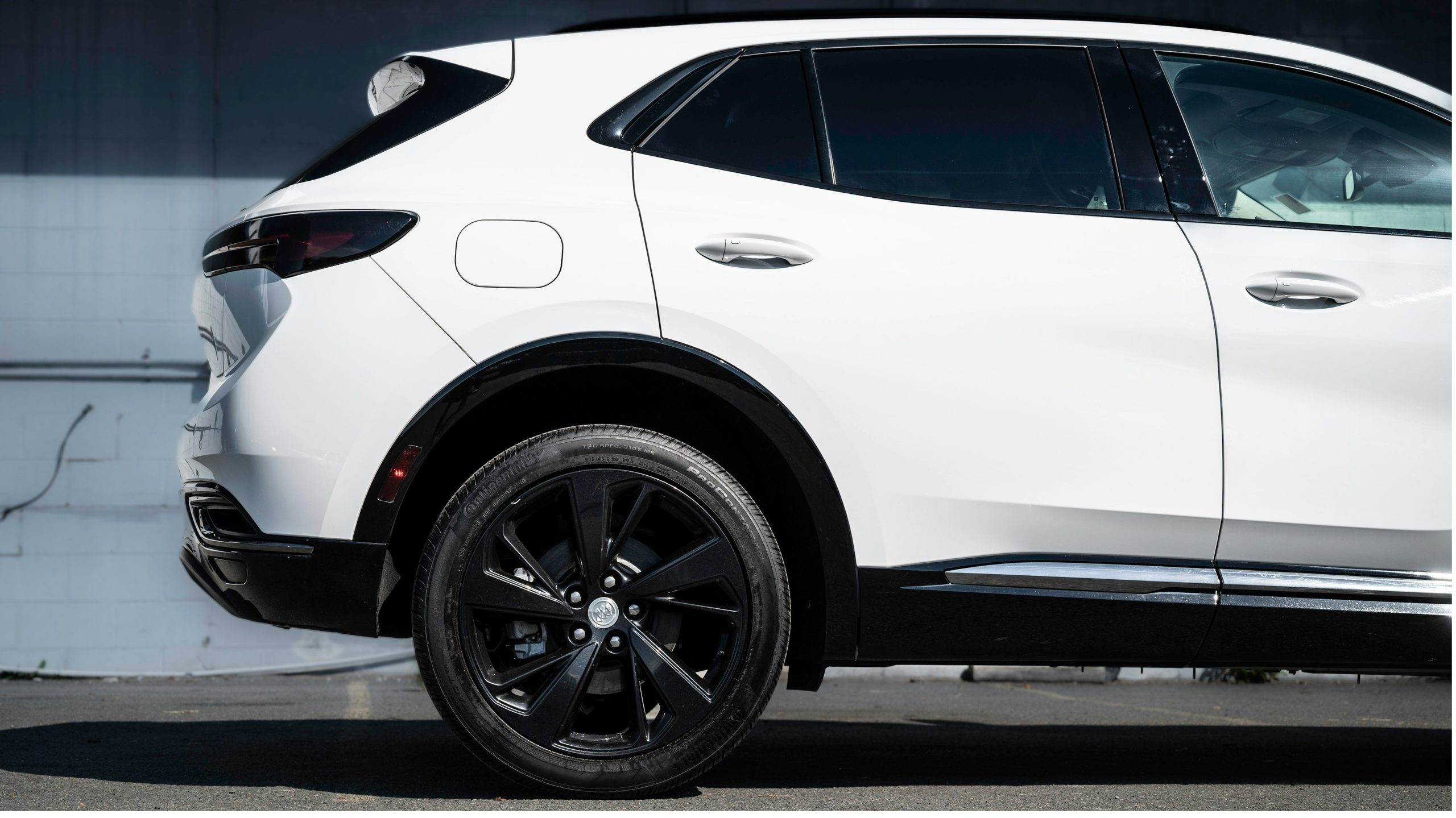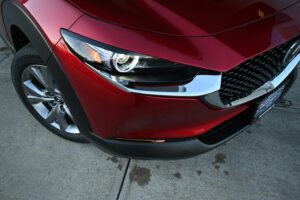
How Do Crossover Cars Differ from SUVs?
Definitions: Understanding the fundamental characteristics and purposes of both crossover cars and SUVs.
Crossover cars and SUVs are both popular types of vehicles, but they have some distinct characteristics that set them apart. A crossover car, also known as a crossover SUV, is a blend of a sedan and an SUV. It combines the best features of both types, offering the ruggedness and versatility of an SUV with the comfort and handling of a sedan. Crossovers typically have a unibody construction, where the body and frame are integrated, resulting in a lighter and more fuel-efficient vehicle.
On the other hand, SUVs, or Sport Utility Vehicles, are designed for off-road capabilities and larger cargo capacity. They traditionally have a body-on-frame construction, which means the body is mounted on a separate frame. This gives SUVs a sturdier structure and better towing capacity, making them suitable for outdoor adventures and hauling heavy loads. SUVs often come with all-wheel drive or four-wheel drive options, providing improved traction on rough terrains. However, their larger size and weight make them less fuel-efficient compared to crossovers.
Body Structure: Exploring the variations in body design and construction between crossover cars and SUVs.
Crossover cars and SUVs differ in their body design and construction, resulting in distinct variations between the two vehicle types. Crossovers typically feature a unibody structure, where the body and chassis are integrated into a single unit. This construction technique allows for a more car-like driving experience, with better handling and fuel efficiency. On the other hand, SUVs traditionally utilize a body-on-frame design, where the body is built separately from the frame. This construction method provides increased durability and towing capacity, making SUVs ideal for off-road adventures and heavy-duty tasks.
In terms of exterior appearance, crossovers often borrow design cues from both sedans and SUVs, resulting in a sleek and sophisticated look. They tend to have a lower ground clearance than SUVs, giving them a more streamlined profile. SUVs, on the other hand, typically boast a more rugged and boxy design, reflecting their off-road capabilities and sizable interior space. The body-on-frame construction of SUVs allows for a higher ground clearance, which is advantageous when traversing rough terrains or encountering obstacles on the road.
Size and Space: Comparing the dimensions and interior space offered by crossover cars and SUVs.
Crossover cars and SUVs are popular choices for individuals and families looking for vehicles with ample space and dimensions. When comparing the two, it becomes apparent that there are some differences in size and interior space.
Crossovers, often built on a car platform, tend to be smaller in size compared to traditional SUVs. They typically offer a more compact and streamlined design, which can make them easier to maneuver in urban settings and parking spaces. However, this also means that they might have less interior space for passengers and cargo. On the other hand, SUVs, being built on a truck platform, generally have a larger overall size. This leads to more spacious interiors, allowing for comfortable seating arrangements and providing ample room for individuals and families, as well as a greater cargo capacity.
Platform: Highlighting the differences in the platforms used for manufacturing crossover cars and SUVs.
Platform is a crucial factor in determining the characteristics and capabilities of both crossover cars and SUVs. While SUVs are often built on truck platforms, providing them with a sturdy and robust foundation, crossover cars are typically constructed on a car-based platform. This distinction in platform choice directly impacts various aspects of these vehicles.
The choice of platform for SUVs gives them the advantage of a high ground clearance and ruggedness, making them well-suited for off-road adventures and harsh terrains. On the other hand, crossover cars, with their car-based platform, deliver a smoother and more comfortable ride on paved roads. This platform decision also affects the overall handling and maneuverability of these vehicles. SUVs, due to their truck-based platform, may have a larger turning radius and feel less agile compared to crossover cars, which are built for maneuverability in urban environments.
Off-Road Capabilities: Examining the varying levels of off-road performance and capabilities of crossover cars and SUVs.
Off-Road Capabilities: Examining the varying levels of off-road performance and capabilities of crossover cars and SUVs.
Off-road capabilities are an important consideration for individuals who frequently venture off the beaten path. Meanwhile, crossover cars and SUVs offer varying levels of off-road performance and capabilities.
When it comes to off-road capabilities, SUVs generally shine. With their rugged body construction and robust drivetrain, SUVs are built to handle challenging terrains, including rocky surfaces, steep inclines, and muddy trails. Equipped with features such as all-wheel drive and advanced traction control systems, SUVs provide superior traction and stability, enabling drivers to confidently navigate through difficult off-road conditions. Additionally, SUVs often offer higher ground clearance, allowing them to navigate over obstacles with ease.
On the other hand, crossover cars, although not designed with the same level of off-road prowess as SUVs, still offer some capability for light off-road adventures. Crossovers typically have a unibody construction, which is lighter and more agile compared to the body-on-frame construction of SUVs. While crossover cars may not be able to tackle the same challenging terrains as SUVs, they can still handle unpaved roads and mild off-road conditions. Despite their limitations, crossovers provide a balance between on-road comfort and off-road capability, making them a suitable choice for individuals who occasionally venture off the beaten path.
Fuel Efficiency: Analyzing the differences in fuel efficiency between crossover cars and SUVs.
Fuel efficiency is a crucial factor that many car buyers consider before making a purchase. When it comes to crossover cars and SUVs, there are noticeable differences in fuel efficiency between the two. Crossover cars are generally more fuel-efficient compared to SUVs. This is mainly because crossovers are built on car platforms, which are lighter and incorporate more advanced technologies designed to minimize fuel consumption. The aerodynamic designs and smaller engine sizes of crossovers also contribute to their improved fuel efficiency. On the other hand, SUVs are known for their larger size and heavier weight, which often result in higher fuel consumption. However, it is important to note that advancements in hybrid and electric SUV models have helped bridge the gap in fuel efficiency between crossovers and traditional SUVs.
In recent years, manufacturers have made significant strides in improving the fuel economy of both crossover cars and SUVs. However, crossover cars still hold an advantage in terms of fuel efficiency due to their lighter build and smaller engine sizes. This is especially beneficial for those who frequently drive in urban areas or have long commutes, as crossover cars offer better mileage and can save a significant amount of money on fuel costs over time. Conversely, SUVs tend to have larger engines and are built for more rugged terrain, which means they typically consume more fuel. Nevertheless, advancements in technology have allowed SUVs to become more fuel-efficient, giving buyers more options to consider when looking for a balance between size and fuel economy.
Handling and Maneuverability: Discussing the variations in handling and maneuverability between crossover cars and SUVs.
Handling and maneuverability are essential aspects to consider when comparing crossover cars and SUVs. Crossover cars are typically designed on a car-based platform, which results in better handling and maneuverability compared to traditional SUVs. The lower center of gravity and lighter weight of crossover cars allow for smoother cornering and more responsive steering. Additionally, their compact size adds to their nimbleness, making them easier to navigate in tight spaces and urban environments.
On the other hand, SUVs have traditionally been built on truck-based platforms, resulting in a higher center of gravity and larger size. This can affect their handling and maneuverability, making them feel less agile than crossover cars. However, modern SUVs have made significant advancements in terms of handling, with manufacturers implementing technologies such as electronic stability control and adaptive suspension systems to improve their on-road performance. While SUVs may not match the sportiness of crossover cars, they do offer better ground clearance and stability, making them more suitable for off-road adventures.
Towing Capacity: Comparing the towing capabilities of crossover cars and SUVs.
Crossover cars and SUVs are both popular choices for individuals or families who need a vehicle with towing capabilities. While crossovers may be smaller in size compared to SUVs, many models are designed to have respectable towing capacities. The towing capacity of a crossover car typically ranges from 1,500 to 3,500 pounds, which is sufficient for towing small trailers, boats, or camping equipment. However, it is important to note that the towing capacity will vary depending on the specific make and model of the crossover, as well as any additional towing packages or upgrades that are available.
In contrast, SUVs are generally known for their greater towing capacity compared to crossovers. With their larger size and more robust engines, SUVs are capable of towing heavier loads. The towing capacity of an SUV can range from around 3,500 to 9,000 pounds, depending on the SUV’s size, engine power, and additional towing features. This makes SUVs a better option for individuals who require greater towing capabilities, such as towing larger trailers, campers, or even small boats. However, it is important to keep in mind that towing capacity can also depend on the vehicle’s specific configuration, including its drivetrain and suspension setup.
Pricing: Exploring the price ranges and cost considerations associated with crossover cars and SUVs.
When it comes to pricing, there is a noticeable distinction between crossover cars and SUVs. Generally, crossover cars tend to have a lower starting price compared to SUVs. This can be attributed to their smaller size and lighter weight, which typically results in lower production and material costs. Crossover car prices can range from around $20,000 to $40,000, depending on the brand, model, and included features.
On the other hand, SUVs tend to have a higher starting price due to their larger size and heavier build. This often translates to higher manufacturing and material costs, resulting in a higher price point for consumers. SUV prices can range from around $30,000 to well over $100,000, depending on the brand, model, and level of luxury or performance features offered. It’s important to note that these price ranges are just a general indication, and specific pricing can vary based on various factors such as trim levels, optional equipment, and geographic location.
Market Trends: Understanding the current market trends and consumer preferences for crossover cars and SUVs.
When it comes to the current market trends and consumer preferences for crossover cars and SUVs, it is evident that these vehicle types have gained significant popularity in recent years. With their combination of versatility and functionality, crossover cars and SUVs have become the go-to choice for individuals and families alike. Consumers are attracted to the ample interior space, allowing for comfortable seating and cargo room, as well as the high driving position that provides a commanding view of the road ahead. Additionally, the sleek and stylish design of many crossover cars and SUVs adds to their appeal, making them a desirable choice for those who value both practicality and aesthetic.
Moreover, the rising demand for crossover cars and SUVs can also be attributed to the increasing emphasis on safety features and advanced technology in the automotive industry. Manufacturers have introduced a range of driver-assistance technologies, such as lane-keeping assistance and blind-spot monitoring, to enhance the safety of these vehicles. Additionally, the integration of innovative infotainment systems, smartphone connectivity, and other high-tech features has further enhanced the overall driving experience. As consumers become more tech-savvy and safety-conscious, the market for crossover cars and SUVs is expected to continue thriving, with manufacturers continually striving to meet the evolving demands and preferences of their customers.






